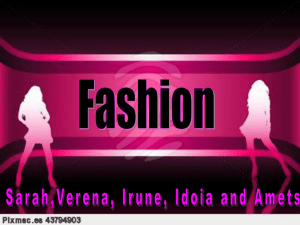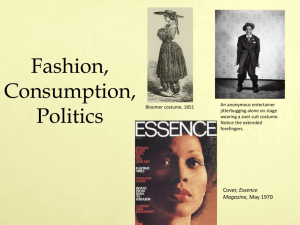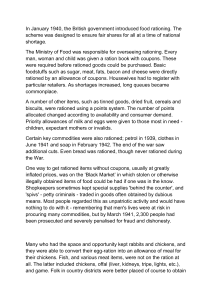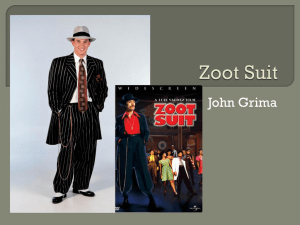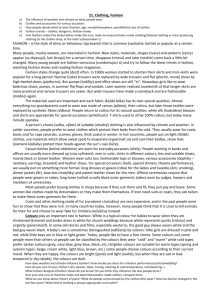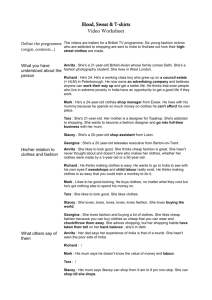1940`s
advertisement
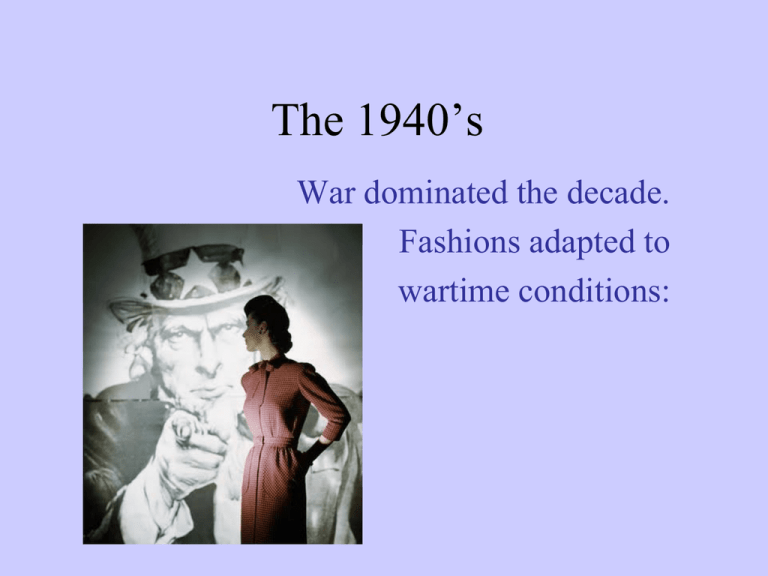
The 1940’s War dominated the decade. Fashions adapted to wartime conditions: • • • • • Ball point introduced First computer built Microwave oven invented Bikini introduced Polariod invented Wartime Fashions • Hair was obviously dyed. • Hairstyles were important because they were cheaper than hats. • Nail polish became common. – The French fashion industry was still strong despite the occupation of Paris Rationing: Different colours were spent at different times. A week of food rations clothes were also rationed • The coupon system allowed people to buy one completely new set of clothes once a year. Clothes were designed to meet these limitations • Shoes had wooden heels because leather was hard to find. • Shoes, bags & gloves matched. Restricted fabric = short skirts • Details were added that did not add to the price (or materials required) Hats became important fashion statements Feathers were not rationed and bird populations were threatened • Turbans were an easy way to hide hair & prevent Workplace accidents • Hollywood was not rationed because elaborate movies were good for moral new clothes were rare • Clothes and materials were in short supply. 'Make do and mend'. • Fashion magazines were even filled with advice on how to remake clothes. Some changes were the result of technological developments • Nylon was invented! Nylon was invented • http://glamourdaze.com/2010/04/1940s-fashion-how-to-wear-fully.html http://glamourdaze.com/2010/04/1940s- • but it was rationed too Pants were popular • they eliminated the need for stockings • were easy to work and bicycle in. Working girls even wore jeans and ankle socks! Menswear inspired womenswear • The military look was popular with women’s wear Christian Dior’s New Look shocked the world Fashion Icons • Rita Hayworth was know for her long red hair. • Lana Turner exposed her curves in a tight sweater and started a fad. Girls who followed this style were known as sweater girls. • Betty Grable was know for her legs. Terms • • • • • Turbans Wedge heels (shoes) The New Look The Snood Peplum The Zoot Suit • Said to have come from the New York jazz scene in the late 1930’s • became the uniform of young Black and Mexican Americans. • exaggerated cartoon like style • wide baggy legged trousers, worn high on the waist with tight cuffs at the ankles. ZOOT SUIT Assignment: The zoot suit was a symbol of independence and rebelliousness. It was associated with black and hispanic culture and, indicated to some, a lack of patriotism. Sources • http://www.1940.co.uk/acatalog/frenchamerican-and-british-wartime-fashion.html • http://www.marieclaire.co.uk/blogs/544203/ 1940s-fashion-the-decade-captured-in-40incredible-pictures.html
